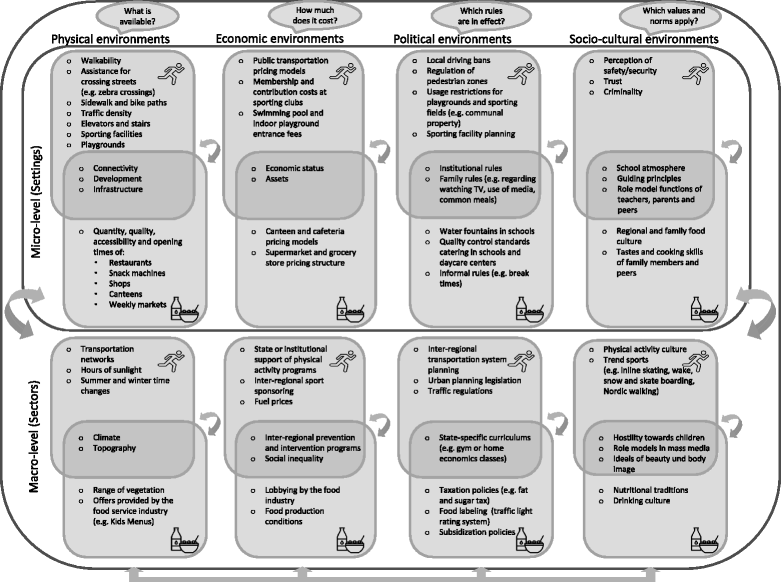Contextual influences on physical activity and eating habits -options for action on the community level
- PMID: 28964266
- PMCID: PMC5622514
- DOI: 10.1186/s12889-017-4790-x
Contextual influences on physical activity and eating habits -options for action on the community level
Abstract
Background: This conceptual paper aims to illustrate the ways in which communities are able to advance health improvements on a population level. Outcome measures may include increased physical activity and healthier eating habits in particular, as well as an improved health-related quality of life and social cohesion as more generic outcomes.
Main body: The paper begins by asking initial questions: Why did previous health-specific interventions only show moderate effects on an individual level and mixed effects on a population level? What is the added value of a community-based public health perspective compared to the traditional biomedical perspective when it comes to prevention? Why are we living the way we are living? Why do we eat what we eat? Why do we move the way we move? Subsequently, we illustrate the broad spectrum of contextual interventions available to communities. These can have geographical and technological as well as economic, political, normative and attitude-specific dimensions. It is shown that communities have a strong influence on health-related contexts and decision-making of adults, adolescents and children. In addition contextual characteristics, effects, mediators, moderators and consequences relevant for health can differ greatly between age groups. Both small-scale settings and overarching sectors possess physical, economic, political and sociocultural characteristics that can be proactively influenced by community decision-makers in the sense of a "health in all policies"-strategy.
Short conclusion: After presenting various interdisciplinary approaches to community-based health interventions, the manuscript closes with the following core message: Successful community-based health promotion strategies consist of multilevel - multicomponent interventions on the micro, meso and macro-level-environments.
Keywords: Environment; Exercise; Obesity; Preventive medicine; Public health; Residence characteristics.
Conflict of interest statement
Ethics approval and consent to participate
Not applicable.
Consent for publication
Not applicable.
Competing interests
The authors declare that they have no competing interests.
Publisher’s Note
Springer Nature remains neutral with regard to jurisdictional claims in published maps and institutional affiliations.
Figures


References
-
- Powell P, Spears K, Rebori M. What is obesogenic environment? 2010. [https://www.unce.unr.edu/publications/files/hn/2010/fs1011.pdf]. Accessed 25 Sept 2017.
MeSH terms
LinkOut - more resources
Full Text Sources
Other Literature Sources
Medical

